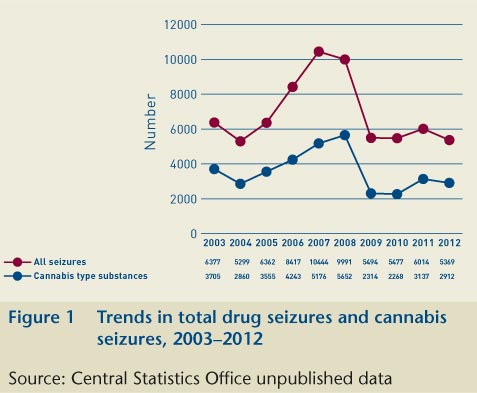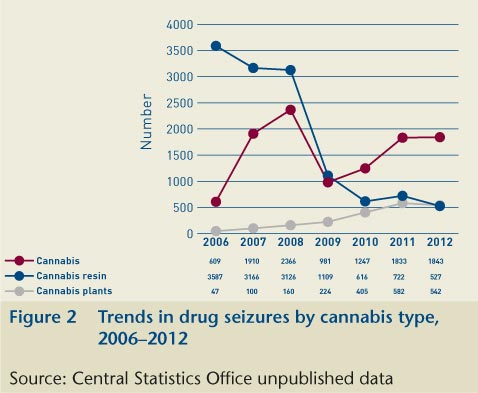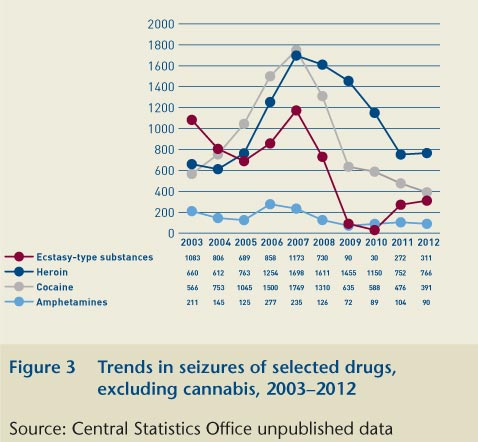Connolly, Johnny (2013) Drug law enforcement and seizures. Drugnet Ireland, Issue 47, Autumn 2013, pp. 35-36.
| Preview | Title | Contact |
|---|---|---|
|
PDF (Drugnet Ireland 47)
- Published Version
1MB |
In a recent Dáil debate on Garda operations tabled by the Joint Oireachtas Committee on Justice, Defence and Equality, the Garda Commissioner stated that there are approximately 25 organised crime groups (OCGs) operating throughout the state.1 The majority are centred in large urban areas such as Limerick, Cork, Galway, Sligo and Dublin. The Commissioner went on to say:

The decrease in cannabis seizures between 2008 and 2010 may also be partly explained by a change in the nature of cannabis use, with people moving from resin to more potent forms of cannabis, such as herbal cannabis. For example, Figure 2 shows that although seizures of cannabis resin have decreased significantly since 2006, seizures of cannabis plants have increased steadily since then, with a slight decrease in 2012. Herbal cannabis seizures almost doubled between 2009 and 2011, from 981 in 2009 to 1,833 in 2011, and then levelled off in 2012.

The reduction in the total number of reported seizures since 2007 shown in Figure 1 may also be explained by a reduction in the number of seizures of other drugs. Figure 3 shows trends in seizures for a selection of drugs, excluding cannabis, between 2003 and 2012. There was a significant decline in seizures of cocaine and heroin between 2007 and 2011. In 2012, heroin seizures increased slightly, while cocaine seizures continued to decrease. Seizures of ecstasy-type substances also decreased significantly between 2007 and 2010. However, in 2011, they increased by more than 800%. This upward pattern continued, albeit by a small margin, in 2012.

1. Callinan M (2012, 21 November) Parliamentary Debates Dáil Éireann (Official report: unrevised): Joint Committee on Justice, Defence and Equality debate. Garda operations: discussion with An Garda Síochána. www.drugsandalcohol.ie/20352
2. An Garda Síochána (2013) An Garda Síochána: annual report 2012. Dublin, An Garda Síochána. www.drugsandalcohol.ie/20365
3. Revenue Commissioners (2013) Annual report 2012. Dublin: Revenue Commissioners, p.46. www.revenue.ie/en/about/publications/annual-reports/2012/downloads.html.
MM-MO Crime and law > Justice and enforcement system
VA Geographic area > Europe > Ireland
MM-MO Crime and law > Crime > Substance related crime > Crime associated with substance production and distribution
Repository Staff Only: item control page